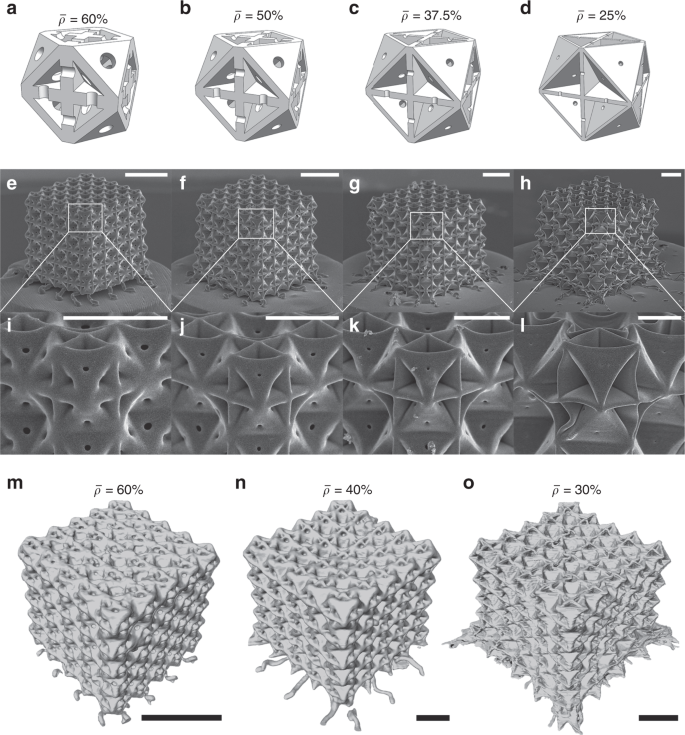(Broad spectrum Novel hybrid material proves an efficient photodetector)
2020/4/9 ドレスデン・ロッセンドルフ研究所(HZDR)
・ HZDR が、金属有機構造体(MOF)の 2D フィルムによる光検出器を開発。
・ デジタルカメラ等の電子デバイスに使用される光センサーのようなオプトエレクトロニクスコンポーネントの需要が高まる中、広範囲の光の波長領域に対応する安価な新しい半導体材料が求められている。
・ 高多孔質でその 90%が空洞から構成される MOF は、ガスの貯蔵や触媒等で広く利用されている。今回開発の 2DMOF フィルムは、有機材料と鉄イオンで構成され、オプトエレクトロニクスのアプリケーションに適した半導体特性を提供する。
・ 同研究所では、2DMOF 半導体の光検出での利用に向けてその電気特性を研究。特に、光感度がどの程度まで温度と光の波長に影響を受けるかを調査し、400~1575nm(紫外~近赤外)の広範囲な光の波長領域の検出が可能なことを確認。オプトエレクトロニクスコンポーネントの能動素子として最適な特性を、MOF フィルムによる光検出器で初めて実証した。
・ 同 MOF フィルムによる検出可能な光の波長領域の広さは、その極めて狭いバンドギャップによるもの。半導体材料が電気信号に変換できる光の波長領域は、固体物質の価電子帯と伝導帯間のエネルギー的な距離であるバンドギャップで決まる。通常、半導体は、光の波長を利用して電子を伝導帯の高エネルギーレベルに引き上げるのに十分な大きさのバンドギャップを有し、バンドギャップが狭いほど、このような電子の励起に必要な光のエネルギーは少なくなる。
・ 同 MOF フィルムによる光検出器を低温度に冷却すると、電子の熱励起が抑制されることでその性能がさらに向上する。また、同検出器の形状の最適化、より安定したコンタクトの製造や材料開発をさらに進め、様々なオプトエレクトロニクスアプリケーションで使用できる、製造が安価で優れた電気特性を提供する同 MOF フィルム光検出器を作製した。
・ 今回光検出に使用した MOF フィルムの薄さは 1.7μm。コンポーネントへの統合には、さらに薄くする必要があるため 70nmへの低減を図る。このような薄さでこれまでと同様の性能を確認できれば、製造段階に向けた開発に着手する。
URL: https://www.hzdr.de/db/Cms?pNid=99&pOid=60714
(関連情報)
Advanced Materials 掲載論文(フルテキスト)
Demonstration of a Broadband Photodetector Based on a Two‐Dimensional Metal–Organic
Framework
URL: https://onlinelibrary.wiley.com/doi/full/10.1002/adma.201907063
<NEDO海外技術情報より>
Abstract
Metal–organic frameworks (MOFs) are emerging as an appealing class of highly tailorable electrically conducting materials with potential applications in optoelectronics. Yet, the realization of their proof‐of‐concept devices remains a daunting challenge, attributed to their poor electrical properties. Following recent work on a semiconducting Fe3(THT)2(NH4)3 (THT: 2,3,6,7,10,11‐triphenylenehexathiol) 2D MOF with record‐high mobility and band‐like charge transport, here, an Fe3(THT)2(NH4)3 MOF‐based photodetector operating in photoconductive mode capable of detecting a broad wavelength range from UV to NIR (400–1575 nm) is demonstrated. The narrow IR bandgap of the active layer (≈0.45 eV) constrains the performance of the photodetector at room temperature by band‐to‐band thermal excitation of charge carriers. At 77 K, the device performance is significantly improved; two orders of magnitude higher voltage responsivity, lower noise equivalent power, and higher specific detectivity of 7 × 108 cm Hz1/2 W−1 are achieved under 785 nm excitation. These figures of merit are retained over the analyzed spectral region (400–1575 nm) and are commensurate to those obtained with the first demonstrations of graphene‐ and black‐phosphorus‐based photodetectors. This work demonstrates the feasibility of integrating conjugated MOFs as an active element into broadband photodetectors, thus bridging the gap between materials’ synthesis and technological applications.



